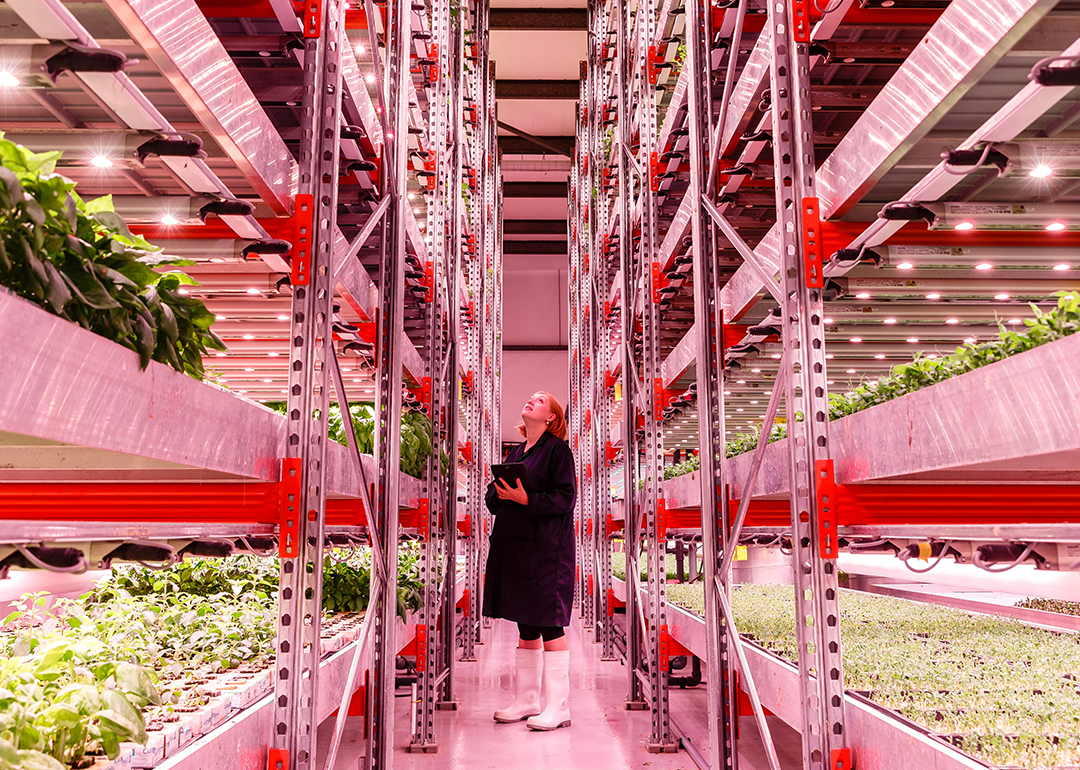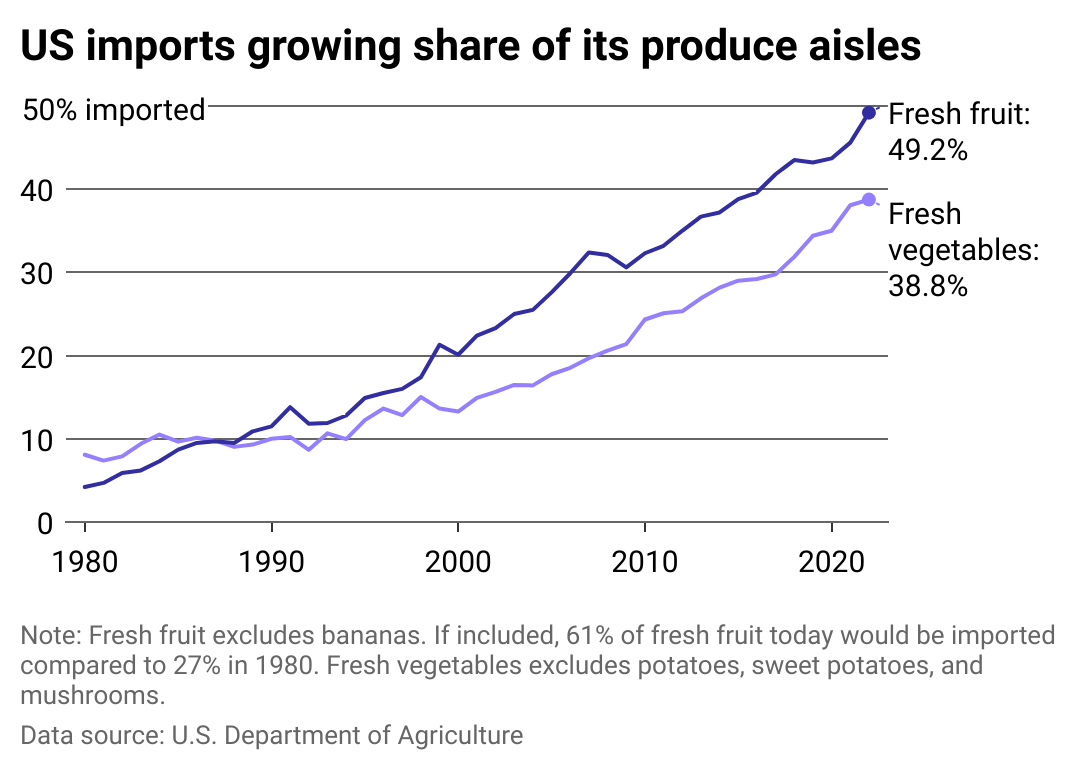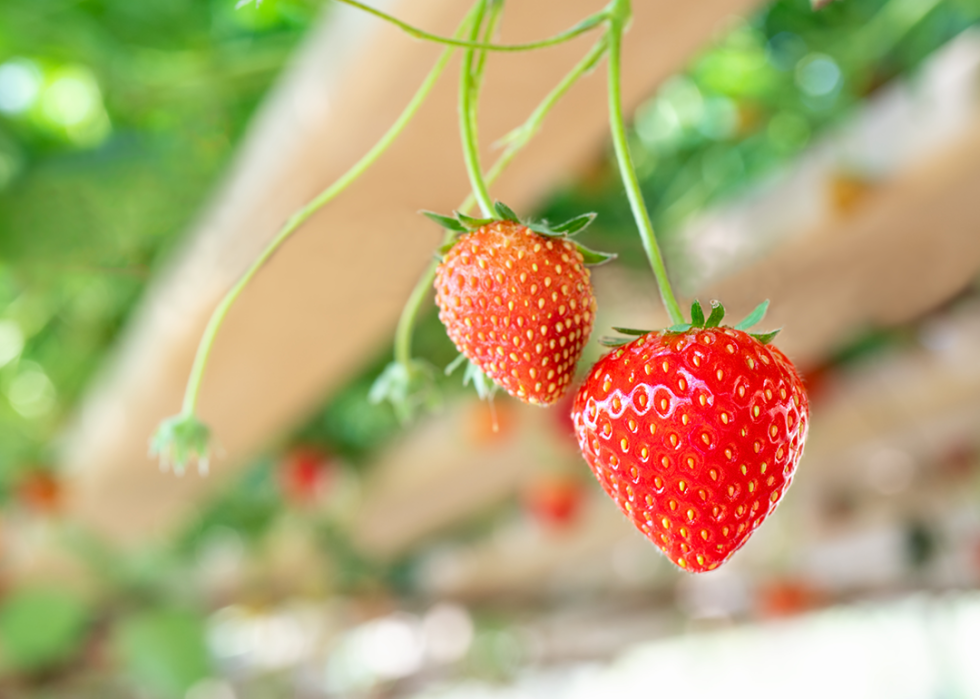
Could vertical farming change the local food landscape?
This story originally appeared on Findbusinesses4sale and was produced and distributed in partnership with Stacker Studio.
Could vertical farming change what local food means?
Many Americans have become accustomed to plentifully stocked grocery stores, with uninterrupted access to their favorite fruits and vegetables year-round. People don't often consider the interconnected web of capital making so much produce reliably available.
A global food supply chain sustains this bounty. As seasons shift, Americans rely on other states, and frequently other countries, to supply warm-season produce. In 2022, over 38% of fresh vegetables were imported internationally, up from just 8% in 1980, according to Department of Agriculture data. American reliance on international produce imports comes with significant carbon emissions. Of all greenhouse-gas emissions related to the food supply chain, 20% are associated with transportation. As the future becomes ever more imperiled by the climate crisis, it is increasingly vital to cut emissions when possible.
A new trend in agricultural technology could be one way to lower transportation emissions in the food supply chain. Vertical farming, a technique that grows crops in retrofitted warehouses instead of open fields, is rising. To better understand the current and future effects of vertical farming in the United States, Findbusinesses4sale used Department of Agriculture data to explore the country's reliance on imported produce and the rise of vertical farming efforts that grow more foods domestically.
Indoor growing allows for climate control to produce the ideal environment for specific types of plants—meaning the seasonal produce the U.S. imports from warmer countries could instead be grown locally and year-round, slashing transportation costs. Local farming also means fresher produce for consumers, with less time spent in transit.
In addition to reduced emissions, vertical farms use significantly less water than traditional farms. Vertical-farmed crops also can be grown without pesticides and are less likely to be contaminated with harmful bacteria like E. coli.
While vertical farming is a promising solution for cutting transit-linked emissions, it involves other energy concerns. Irrigation, ventilation fans, and all-day lighting make for high electrical bills for vertical farms.
The Russia-Ukraine war is driving up energy costs, posing a challenge to the immediate future of vertical farms, which are also short on cash from dwindling venture capital investments. Still, vertical farming is an emergent technology with tremendous potential to transform the farming industry and global food supply chain.

US relies on other countries for much of its produce
The United States relies heavily on international imports for produce. Whereas imported produce comprised only 8% of vegetables and 4% of fruits in 1980, those numbers are very different now. In 2022, more than 38% of vegetables and 49% of fruit, except bananas, came from other countries.
Some of that expansion comes from more legal opportunities to bring fruit into the country. The New York Times reports the federal government has approved around 100 new rules allowing specific countries to import specific crops over the past couple of decades.
And then there are bananas. Americans eat more bananas than any other fresh fruit, an average of 13 pounds per person yearly. And nearly all of these bananas are imported. Including bananas radically changes the proportion of fruit imported each year. With banana data included, imported fruits were 27% of all fruit for sale in the U.S. in 1980 and 61% in 2022.
Vertical farming not only potentially lowers our reliance on imported produce, but it can make urban areas more resilient. According to a 2022 study in the journal Heliyon, vertical indoor farming will decrease the dependence urban areas have on rural agriculture. In turn, the local food landscapes in urban areas are better protected against food insecurity during economic crises, natural disasters, and other supply chain disruptions.

Not all crops are ideal for vertical farms
Some crops are better suited to vertical farming than others. Cereal and row crops, like corn, wheat, and rice, are better suited for traditional farming formats. These crops thrive with ample space and often require processing before sale.
Lettuce and leafy greens are currently the most popular crops for vertical farming, likely because they can be grown hydroponically and are harvested whole. A vertical farm in California can grow lettuce up to twice as fast as in a field. Small berries and tomatoes are also good candidates for vertical farming, making them local crops almost anywhere in the country. They can be grown quickly and delivered to stores fast, with less water use and lower carbon emissions.
Data reporting by Emma Rubin. Story editing by Jeff Inglis. Copy editing by Kristen Wegrzyn.



